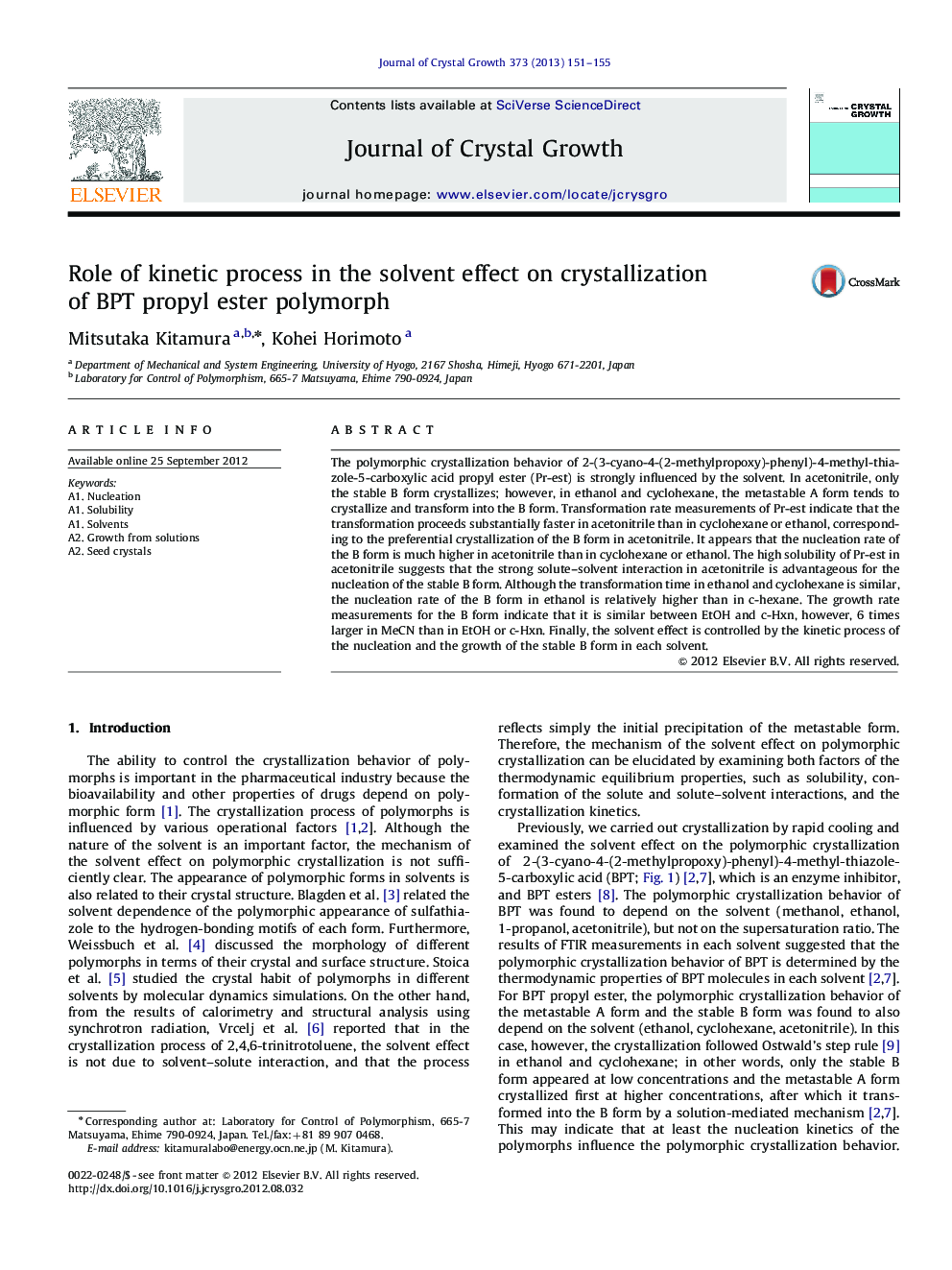| Article ID | Journal | Published Year | Pages | File Type |
|---|---|---|---|---|
| 1790959 | Journal of Crystal Growth | 2013 | 5 Pages |
The polymorphic crystallization behavior of 2-(3-cyano-4-(2-methylpropoxy)-phenyl)-4-methyl-thiazole-5-carboxylic acid propyl ester (Pr-est) is strongly influenced by the solvent. In acetonitrile, only the stable B form crystallizes; however, in ethanol and cyclohexane, the metastable A form tends to crystallize and transform into the B form. Transformation rate measurements of Pr-est indicate that the transformation proceeds substantially faster in acetonitrile than in cyclohexane or ethanol, corresponding to the preferential crystallization of the B form in acetonitrile. It appears that the nucleation rate of the B form is much higher in acetonitrile than in cyclohexane or ethanol. The high solubility of Pr-est in acetonitrile suggests that the strong solute–solvent interaction in acetonitrile is advantageous for the nucleation of the stable B form. Although the transformation time in ethanol and cyclohexane is similar, the nucleation rate of the B form in ethanol is relatively higher than in c-hexane. The growth rate measurements for the B form indicate that it is similar between EtOH and c-Hxn, however, 6 times larger in MeCN than in EtOH or c-Hxn. Finally, the solvent effect is controlled by the kinetic process of the nucleation and the growth of the stable B form in each solvent.
► Influence of kinetic process in solvent effect on polymorphic crystallization of BPT ester is examined. ► Transformation rate corresponds to the crystallization behavior in each solvent. ► Solvent effect is controlled by nucleation and growth kinetics of stable form.
